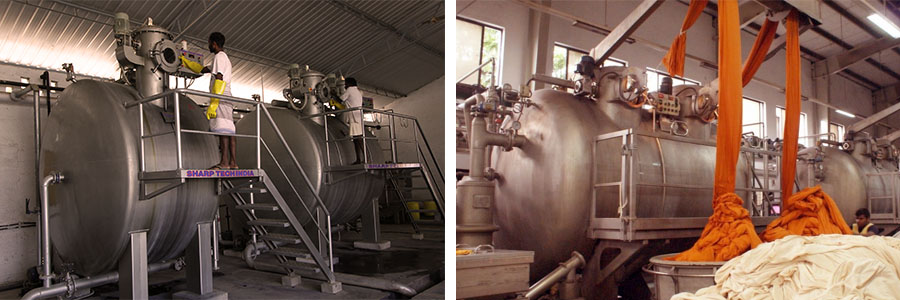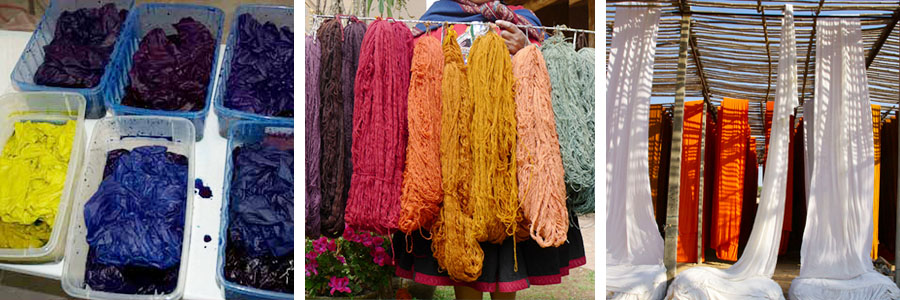Dyeing & Processing
The textile dyeing and finishing industry has created a huge pollution problem as it is one of the most chemically intensive industries on earth. The number one is polluter of clean water (after agriculture). More than 3600 individual textile dyes are being manufactured by the Industry today. The industry is using more than 8000 chemicals in various processes of textile manufacture including dyeing and printing. Many of these chemicals are poisonous and damaging to human health directly or indirectly.
Almost every industrial dye process involves a solution of a dye in water, in which the fabrics are dipped or washed. After dying a batch of fabric, it’s cheaper to dump the used water – dye effluent – than to clean and re-use the water in the factory. So dye factories across the world are dumping millions of tons of dye effluent into rivers.

Most countries require factories to treat dye effluent before it is dumped. Separating the dye chemicals from the water results in a dye sludge and cleaner water. The water, which still contains traces of dye, is dumped into the river, and leaves the problem of what to do with the sludge?
To avoid, we are switching to the Eco friendly dye. Eco friendly dye is nothing but natural dyes. Dyes derived from animal or plant material without any chemical treatment. They are obtained from sources like flowers, leaves, insects, bark roots etc.; however, they are not readily available and involve an extraction process.
For example some of the dye were extracting from naratually
Indigo: One of the most important and popular dyes from ancient times till today. It is obtained from the leaves of Indigfera turquoise.
Logwood: The tree is fairly large and the freshly cut wood is colorless until it is exposed to air.
Madder: The valuable dye pigment that give Turkey Red Color.
Natural dyes such as indigo, pomegranate rind, myrobalan, lac and manjistha as well as benign chemicals like aluminum and iron are eco-friendly alternatives to the synthetic dyes and hazardous chemicals used in conventional fabric dyeing. Natural dyes are made from plants, earth clays and even insects, which translates to less harm to the ecosystem. Another eco-friendly alternative is the use of vegetable dyes on leather garments.
Chemical are sensitivity range from skin rashes, headaches, trouble concentrating, nausea, diarrhea, fatigue, muscle and joint pain, dizziness, difficulty breathing, irregular heart beat, and/or seizures. Symptoms in children include red cheeks and ears, dark circles under the eyes, hyperactivity, and behavior or learning problems.

Advantages of eco friendly dye
1. Natural dyes are more eco-friendly than the synthetic dyes, as the synthetic dying procedure can produce pollutants and certain diazole dyes are carcinogenic.
2. Natural dyes are also free from carcinogenic components.
3. Most natural dyes are known as antioxidants.
4. Depending on the mordant used with one dye can give variety of colors which also depends on the source of the dye. One dye may obtain 5 to 15 varying colors and shades.
